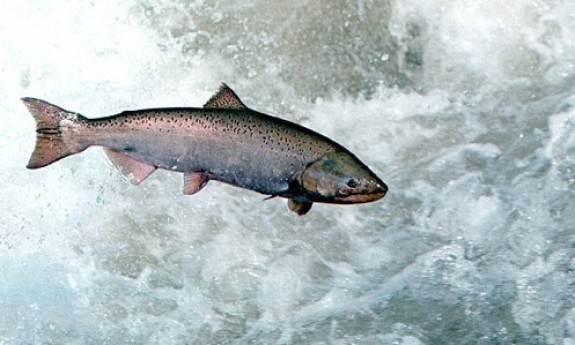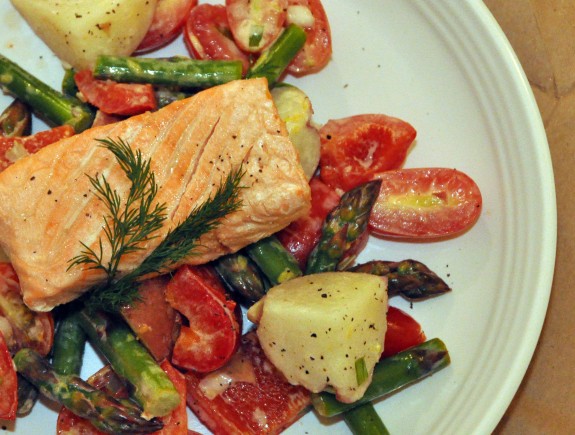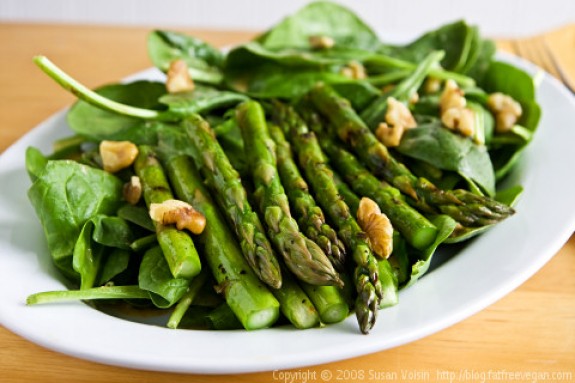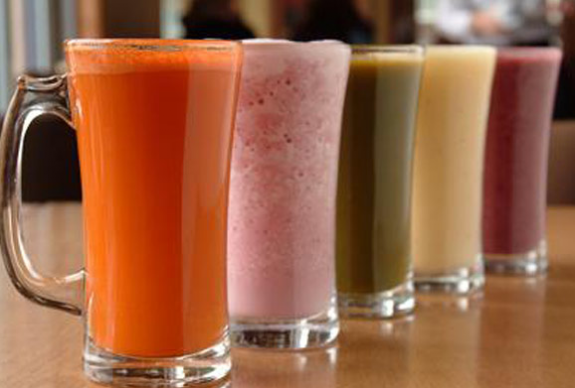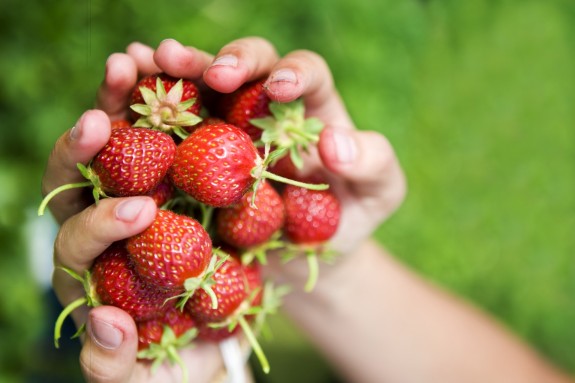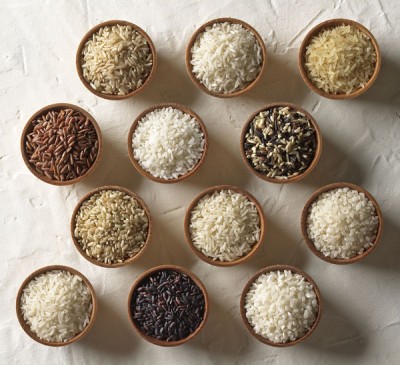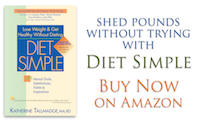Earth Day: Because it is Right
- At April 22, 2012
- By Katherine
- In Articles, News
 0
0
At times I feel overwhelmed by the obesity epidemic; the issues seem insurmountable. In that way, I have a lot in common with people trying to “fix” the environment. Which is why I felt empowered when I was told: “Do it just because it is right, even without a goal in mind,” by Wendell Berry, renowned conservationist, author, poet, and farmer, visiting the Washington National Cathedral today for an Earth Day lecture. Berry was referring to the importance of “Being critical of our society’s industrial and financial values… You must oppose these things whether or not you expect to be successful, because it is the right thing to do.” But he said he was heartened that today “at least there is a public conversation,” compared to the 1960s, when he started his advocacy work.
He gave me hope for continuing my obesity-epidemic-fighting efforts, even though financial interests seem to wield more influence than protecting the health and welfare of the world, and at times success seems beyond reach in my lifetime.
This year, Berry was awarded the 44th Jefferson Lecture by the National Endowment of the Humanities. “Wendell Berry is an American treasure whose prose and poetry have— with subtlety, intelligence, and conviction—helped open our eyes to the importance of respecting and living with nature,” said NEH Chairman Jim Leach. “Tilling the land of his Kentucky forebears, he is a 21st-century Henry David Thoreau.”
Earth Day marked the Washington National Cathedral’s kick-off for a year of talks by nationally acclaimed speakers, authors and theologians on the environment. In that spirit, the Cathedral’s Environmental Advocacy Group has compiled small steps we can each take which, collectively, can have a positive impact on our environment. So if you are feeling overwhelmed at the prospect of global warming, extinctions, and the like, perhaps it would help to focus on more do-able changes you can make in your life. Pick just one:
Today I will:
__Turn off the lights, TV, and computer when I leave the room,
__Pick up and throw away any trash I see on the ground,
__Take a shorter shower,
__Adjust my thermostat by three degrees.
This week I will:
__Bike, walk, carpool, or use public transportation,
__Take a day of rest,
__Change at least five light bulbs in my home to compact fluorescents or LEDs,
__Consciously combine trips and errands,
__Take the stairs instead of the elevator,
__Hang clothes on a drying rack or the line instead of using the dryer.
This month I will:
__Use cloth shopping bags,
__Clean out my closets and donate unused items,
__Check the tire pressure on my car,
__Buy more local and organic produce.
What you eat profoundly affects the environment, and the changes are easier than you think! Learn more…
Salmon Says…
- At April 06, 2012
- By Katherine
- In Articles, News
 0
0
It’s Salmon Season!
“After years of fattening up in the ocean, adult salmon return to their ‘home’ river to spawn,” said M.J. Gimbar, Fishmonger for Black Restaurant Group, which runs Blacksalt Fish Market and Restaurant on MacArthur Blvd in Palisades. “This is extraordinary as the salmon find the exact same spot where they were born to lay their own eggs, and this process is repeated for generations to come.” “The wild Pacific King Salmon are the first to make it up the rivers and are just starting to arrive in Washington,” said Bob Moore, owner of Canon’s Seafood in Georgetown.
Nothing compares to the beautiful, naturally bright-pink wild Pacific salmon for flavor or for omega 3 fatty acid content. Before I share several delicious ways of preparing and enjoying salmon, I’ll explain why it’s so important nutritionally.
I first became interested in the power of omega-3 fatty acids when psychiatrists I work with began prescribing them for their depressed patients. Then I started hearing about their benefits for arthritis and a host of other diseases. And I couldn’t help but wonder, could it be possible that one simple change in the diet could provide so many benefits?
The connection between omega-3 fatty acids and health was first observed in the 1970s. Scientists noted that compared with their counterparts in Scandinavia, Greenland Eskimos had a reduced rate of heart disease, rheumatoid arthritis and other conditions even though they were eating a high-fat diet. The scientists hypothesized that the type of fat — marine derived — might play a role.
Since then, study after study has confirmed that omega-3 fatty acids, a type of polyunsaturated fat found primarily in fish, have a potent and positive effect on heart disease patients. Omega-3s prevent irregular heart beat, reduce plaque inside artery walls and decrease blood clotting, triglycerides (blood fat), blood pressure and inflammation.
“Omega-3s favorably affect a number of risk factors for cardiovascular disease and at the top of the list is reducing the risk of sudden death from heart attack,” says Penny Kris-Etherton, a nutrition professor at Pennsylvania State University.
But the healing powers of omega-3s don’t stop there. Research suggests they may reduce the risk of diabetes, reduce insulin resistance in people with diabetes, enhance bone density and inhibit proliferation of cancer cells in the breast, prostate and colon and improve skin condition by curbing psoriasis. Inflammatory diseases such as rheumatoid arthritis, ulcerative colitis and Crohn’s disease seem to improve with more omega-3s. In infants, it improves cognition and visual acuity. And emerging research indicates omega-3s may boost levels of the brain chemicals serotonin and dopamine, decreasing depression and violent behavior.
While not an answer to every ailment, omega-3 fatty acids possess considerable healing powers. As an indication of their importance, the Food and Nutrition Board of the National Academy of Sciences recently established a minimum daily requirement: 1.1 grams for adult women, 1.6 grams for adult men.
But in nutrition, balance is everything. Learn more about omega 3 fatty acids…
Enjoy some of Katherine’s favorite salmon recipes…
Salad of New Potatoes and Asparagus in a Lemony-Garlic-Herb Mayonnaise
Topped with Poached Salmon (see photo below)
Broiled Salmon in a Mustard Seed Crust
Asparagus Already? Katherine’s Favorite Asparagus Recipes
- At April 01, 2012
- By Katherine
- In Articles, News
 0
0
If any food says SPRING loudly and clearly, it’s ASPARAGUS!
Asparagus season is earlier than usual because of the record-setting warm winter weather, and I, for one, am grateful. As someone who almost exclusively buys my produce from the farmers’ markets, I’ve been feeling a bit bored with winter’s kale, potatoes and beets… Kale and potatoes and beets, oh my!
I have several luscious asparagus recipes I’ve been dying to get into. Before I share them with you, let me tell you why asparagus is so good to eat (besides being uniquely delicious).
Asparagus is packed with nutrients. Low in calories, it’s an excellent source of folic acid, thiamin, vitamin C, and B6. Asparagus, like other fruits and vegetables, is sodium- fat- and cholesterol-free. It is an important source of potassium and nutrients for boosting your immune system, reducing inflammation, lowering blood pressure, and preventing heart disease and cancer. Asparagus is especially high in glutathione, one of the body’s most potent cancer fighters, according to the National Cancer Institute. It’s also high in rutin, which is valuable in strengthening the blood vessels.
When buying asparagus, it should be bright green with tight, firm tips. And you’ll need to get to the farmer’s market early, as it goes fast! I’m not the only one eager for change…
My favorite asparagus recipe is one I developed with my client, Rebecca. We made a mess in her kitchen with several bundles of asparagus in each corner. We roasted it, steamed it, and sauteed it. We tried a variety of dressings and accompaniments.
The result? “Chilled Asparagus in a Creamy Tarragon, Shallot, and Roasted Walnut Vinaigrette.” How delicious is it? Let me just say my friend Cindy Mize, who I immortalized in my book, Diet Simple, as having just lipstick and fingernail polish in her refrigerator (during her younger days in Washington), says she can’t sleep knowing it is in her refrigerator. In her new life as president of Miami Capital Properties in Key Biscayne, Florida, she has many dinner parties at which my asparagus recipe is featured. After her dinner guests leave, she says she sneaks to the refrigerator at midnight to scarf up the leftover. I can hardly believe the transformation of this southern gal who claimed she would only eat “brown” or “white” food: but I guess that illustrates the power of a great recipe!
A few of Katherine’s favorite asparagus recipes…
Chilled Asparagus in a Creamy Tarragon, Shallot and Roasted Walnut Vinaigrette
Salad of New Potatoes and Asparagus with Lemony Garlic Herb Mayonnaise
Pasta with Pesto, Roasted Asparagus and Cherry Tomatoes
Asparagus Salad in a Vietnamese-Style Dressing
Puree of Asparagus Soup with Tarragon
Chef Janis McLean’s Asparagus Frittata
- Cindy Mize during her non-vegetable-eating days in Washington, D.C.
Liquid Calories
- At March 27, 2012
- By Katherine
- In Articles, News
 1
1
Listen to Katherine discussing juicing on National Public Radio’s Kojo Nnamdi Show on WAMU 88.5 FM.
Juicing is all the rage these days, with juice cleanses, celebrity juicers, and Starbucks opening its first Juice Bar. On National Public Radio’s Kojo Nnamdi Show, I discussed juicing and juices. Find the link below…
I’ve been drinking orange juice every morning of my life. You’d think I’d be sick of it by now. But every morning, I look forward to my “sunshine in a glass,” and it never disappoints. Especially on those occasions when it’s fresh-squeezed. I could live on the stuff. Just thinking of it makes me salivate!
But I save my juice for 4 ounces in the morning because, while it packs a nutritional punch, it also puts on pounds, and fast! Here’s how…
My client, Caroline, who was successfully losing weight, was disappointed one recent week that she didn’t lose weight as usual. It didn’t make sense to either of us. Her food intake was stellar. She was even a little more physically active than usual. It wasn’t until we reviewed her food diary thoroughly that we discovered the culprit was liquid calories, and they added up in a way that surprised her. In her case – as is the case with many of us – that extra glass of wine or mixer, juice as a snack here and there, can add up in ways we don’t expect.
Liquid calories in just about any form, whether alcohol, juices, or sodas, are stealth calories. They come in undetected under the radar screen but have an impact that can be enormous. Scientific evidence is confirming that though these liquids count as calories, our bodies don’t detect them the same way they would if we were eating solid food. When we eat calories in the form of solid food, we naturally compensate by reducing the rest of our meal’s or day’s food intake. But when people ingest liquid calories, studies show, they don’t compensate for them by eating fewer calories.
“Fluid calories do not hold strong satiety properties, don’t suppress hunger and don’t elicit compensatory dietary responses,” says Richard D. Mattes, MPH, PhD, RD, Professor of Foods and Nutrition at Purdue University. “When drinking fluid calories, people often end up eating more calories overall.”
This may help explain the results of the Harvard Nurses Health Study of more than 50,000 women over eight years. The researchers found those who increased their intake of sugar-sweetened beverages, such as sodas or fruit punch, from one per week to one or more per day, increased their calories by 358 daily and gained significant weight. Women who reduced their intake cut their calories by 319 calories and gained less weight. Earlier studies demonstrated that consumption of sugar-sweetened soft drinks increased the likelihood of obesity in children, but this is the first finding from a long term observational study in adults.
The mechanisms controlling hunger and thirst are completely different, and liquids, even if they contain calories, don’t seem to satisfy hunger even if they quench your thirst. Physiologically, your thirst is quenched once your blood and cell volume is increased by water. This signals your brain that you are no longer thirsty.
Hunger is regulated in your stomach and intestines. While you’re eating, nerves in the stomach wall detect that it is stretching and send satiation signals to the brain. The intestines also release nerve regulators and hormones. At the same time, the hunger hormone, ghrelin, released by the stomach when it is empty, goes down. All of which help you feel satiated.
There are several theories explaining why liquid calories cause lower satiety and increased overall calorie intakes, but it’s still not fully understood. First, cognitively, people have a harder time realizing that liquids count. Also, the mouth-feel of a liquid versus a solid may generate different signals, less time and involvement with food, and reduced psychological satisfaction. Finally, liquids, because they travel more quickly through the intestinal tract, alter the rate of nutrient absorption, which can affect satiety hormones and signaling. It’s likely that all of these reasons are relevant.
Emerging research is finding the hunger hormone ghrelin may play a physiological role.
“When the number and type of calories are the same, the calories in liquid form won’t suppress ghrelin as effectively as if the same calories were in solid form,” says David E. Cummings, associate professor of medicine at the University of Washington and the Veterans Affairs Puget Sound Health Care System.
While Cummings hasn’t tested many types of fluids and their varying effects on ghrelin, other researchers have found drinking fluids may produce varying degrees of satiety, depending on what they contain.
It’s fairly well-established that alcoholic beverages and sugary liquids, especially sodas and fruit drinks aren’t completely registered or compensated for and simply add extra calories.
“Some beverages cross over the line into being a food,” says Barbara J. Rolls, professor of nutritional sciences at Pennsylvania State University. She conducted studies which found people felt more satiated and consumed fewer calories when they had milk-based drinks at the beginning of a meal. The high protein levels in addition to cognitive beliefs about milk being a food may make it more satiating. Also, fluids with food in them, such as soups, are very satiating.
But most caloric fluids Americans consume are not satiating. When you consider that an appropriately sized meal is anywhere from 400 to 700 calories, and one Big Gulp is 640 calories, you understand the scope of the problem! A Starbuck’s Frappuccino can total anywhere from 300 to 600 calories. One glass of wine contains at least 100 calories. And one mixed drink can set you back 300 calories or more. Double or triple these numbers at any given party, tack on the calories in your meals, and you can understand how weight gain is the inevitable result.
My clients who have become aware of liquid calories have achieved impressive results. Take Bob Levey, former Washington Post columnist. Bob wrote about the importance of cutting out his daily lemonade in his successful weight loss effort. My other client, Julie, easily switched her daily Frappuccino to a skim coffee latte and saved 250 calories. My friend, Linda, slowly phased out her daily soda by adding more and more ice to it each week until she was only drinking water. She lost 30 pounds over a year.
Most people find reducing liquid calories is an easy change. Since liquid calories don’t contribute to feelings of satiety, cutting them doesn’t lead to feelings of deprivation or hunger. And there are so many great substitutes. The one liquid that’s important to keep drinking is water. In the winter time, I love sipping water as herbal teas through the day. In the summer, it’s selzer with a twist of lemon or lime, and the occasional diet soda.
Of course, if we are mindful of our calorie intake, a moderate daily dose of wine or other caloric beverage can easily be integrated into our routines. The key is mindfulness and moderation.
Listen to Katherine discussing juicing on National Public Radio’s Kojo Nnamdi Show on WAMU 88.5 FM.
Harvard Study: Fruit Reduces Diabetes Risk
- At March 19, 2012
- By Katherine
- In Articles, News
 0
0
-
- Swedish Strawberries (Photo: Swedish Embassy)
People are always asking me if fruit is too high in sugar to eat, especially if you have diabetes. This fear of fruit, I believe, is leftover from the Atkins craze, making foods like fruits, and even vegetables like carrots, verboten. This is one of the most tragic consequences of this diet fad, because avoiding fruit can actually damage your health.
People who eat fruit have a lower incidence of Type 2 Diabetes, the most common form of the disease, according to a recently published Harvard study. But this study isn’t alone in its conclusions. It corroborates decades of research showing the nutritional value and health benefits of fruits.
Fruit is high in water content and fiber, which help you feel full with fewer calories. Even though it contains simple sugars and carbohydrates, most fruits have a relatively low glycemic index, that is, when you eat it, your blood sugar raises only moderately, especially when compared with refined sugar or flour products.
Fruit is loaded with nutrients scientists believe protect people from major chronic diseases such as heart disease, cancer, type 2 diabetes, and more. The potassium in fruit helps lower blood pressure and actually helps neutralize the blood pressure-raising affects of sodium.
Eating more fruits and vegetables – as high as 5 cups per day or more – is a habit which could help you stabilize and even reverse Type 2 Diabetes. Yes, it is possible!
And, the best part of fruit? It’s delicious! It’s easy to eat, to pack in your lunch box for the office or school, and it’s such a refreshing snack or dessert. What could be better?
Dietary flavonoid intakes and risk of type 2 diabetes in US men and women
Nicole M Wedick, An Pan, Aedín Cassidy, Eric B Rimm, Laura Sampson, Bernard Rosner, Walter Willett, Frank B Hu, Qi Sun, and Rob M van Dam
From the Departments of Nutrition, Epidemiology, and Biostatistics, Harvard School of Public Health, Boston, MA; Channing Laboratory, Department of Medicine, Brigham and Women’s Hospital and Harvard Medical School, Boston, MA; the Department of Nutrition, Norwich Medical School, University of East Anglia, Norwich, United Kingdom; and the Departments of Epidemiology and Public Health and Medicine, Yong Loo Lin School of Medicine, National University of Singapore, Singapore.
Supported by NIH grant from the National Heart, Lung, and Blood Institute.
Abstract
Background: Data from mechanistic studies support a beneficial effect of specific flavonoids on insulin sensitivity. However, few studies have evaluated the relation between intakes of different flavonoid subclasses and type 2 diabetes.
Objective: The objective was to evaluate whether dietary intakes of major flavonoid subclasses (ie, flavonols, flavones, flavanones, flavan-3-ols, and anthocyanins) are associated with the risk of type 2 diabetes in US adults.
Design: We followed up a total of 70,359 women in the Nurses’ Health Study, 89,201 women in the NHS II, and 41,334 men in the Health Professionals Follow-Up Study who were free of diabetes, cardiovascular disease, and cancer at baseline.
Results: During 3,645,585 person-years of follow-up, we documented 12,611 incident cases of type 2 diabetes. Higher intakes of anthocyanins were significantly associated with a lower risk of type 2 diabetes after multivariate adjustment for age, BMI, and lifestyle and dietary factors. Consumption of anthocyanin-rich foods, particularly blueberries and apples/pears, was also associated with a lower risk of type 2 diabetes. No significant associations were found for total flavonoid intake or other flavonoid subclasses.
Conclusion: A higher consumption of anthocyanins and anthocyanin-rich fruit was associated with a lower risk of type 2 diabetes.
Katherine on “The Daily Show with Jon Stewart”
- At March 17, 2012
- By Katherine
- In Articles, News
 13
13
Milk: “It Does A Body Bad?” … Ed Helms Reports!
The Daily Show’s Ed Helms (“The Office”) Investigates Weapons of Mass Destruction you may be harboring in YOUR OWN REFRIGERATOR!
Robin ‘Poldark’ Ellis Charms Washington, D.C. and Me
- At March 09, 2012
- By Katherine
- In Articles, News
 3
3
It’s official. Now that I’ve met Robin Ellis in person during his recent Washington, D.C. visit, I have gone completely gaga over this talented and elegant actor, chef, and author, and his warm and lovely collaborator and wife, Meredith Wheeler. But I’m also charmed by his cookbook, website, and blog. I believe you will agree, and feel transported… inspired… to live a better, healthier life.
When I heard Robin Ellis was coming to D.C. to promote his new Mediterranean cookbook, I jumped into action, and so did a group of generous, community-minded people who came together to give Ellis and Wheeler a warm Washington, D.C. welcome. Washington Fine Properties’ Nancy Taylor Bubes opened her home and her heart to more than 80 guests, the American Institute of Wine and Food co-sponsored, Bistrot Le Zinc Executive Chef, Janis McLean, demonstrated one of Ellis’s signature recipes, and at least twenty guests and fans brought dishes from Ellis’s book.
Ellis is known worldwide as the swashbuckling Captain Ross Poldark, the lead character in the classic BBC Masterpiece Theater series, “Poldark,” originally aired in the 1970s, but recently hailed as “a cure for your ‘Downton Abbey’ blues,” by Los Angeles Times media critic, Robert Lloyd, after viewing the series for the first time. I agree with Mr. Lloyd: but expect a LOT more action, excitement, and ribaldry!
The Washington Post’s food writer, Bonnie Benwick (also an avid admirer) said “Over 29 episodes, social and political intrigue ensue, with heaving bosoms and rugged landscapes and a soaring musical score,” You can enjoy watching the original “Poldark,” on IMDB. It aired for the first time on Acorn TV, an excellent streaming website. It is run by a company where I, incidentally, conducted wellness programs (it’s a small world, isn’t it?). There is a new version, which Robin Ellis generously applauded, though I can’t bring myself to watch it, loving the original so much. Ellis has written a book about his experience, “Making Poldark: Memoir of a BBC/Masterpiece Theater Actor.”
For the past twenty years, Robin Ellis has lived in the south of France with his American wife, Meredith Wheeler, and their menagerie of animals, where he has collected and tested recipes while becoming an accomplished chef. I feel so fortunate he was willing to share his time, his talents, and his evocative stories and photos of his life in the south of France. His culinary experiences and travels, and even step-by-step recipe instructions, have been an inspiration.
Ellis was diagnosed with Type 2 Diabetes twelve years ago and has managed to keep the disease controlled, stay healthy, fit, and even optimistic. “After a few weeks of shock, and ‘why me,’ the diagnosis became an opportunity to get into shape,” said Ellis. “It opened up a whole new culinary path.” His new book, “Delicious Dishes for Diabetics: Eating Well with Type 2 Diabetes” (Skyhorse Publishing, 2011) is for anyone who loves Mediterranean classics. The Mediterranean diet is one I heartily endorse for anyone for superior health, but also, satisfying dining. I’ve witnessed the surprise, relief, and joy when my clients stabilize, and even reverse their Type 2 Diabetes. Robin Ellis did it and you can too!
See a few recipes and a beautiful video montage of Robin Ellis cooking in the south of France
Read The Washington Post’s story about my March 7 Robin Ellis event in Georgetown which contains details about Robin Ellis’ life and new cookbook
Read Robin’s own account of the Georgetown Event on his blog
Read about the Robin ‘Poldark’ Ellis cookbook reception in The Georgetown Dish

Janis McLean and Robin Ellis demonstrating “Salmon Fishcakes with a Sauce of Yogurt, Mustard and Dill”… Katherine “helping” in background. Photo by Robert Arnold

Friends/Volunteers Begin Preparations in the Kitchen. Katherine Tallmadge, Elizabeth Mautner, Zach Lipson, Johanna Medlin. Photo by Meredith Wheeler
Nancy Taylor Bubes’ dining table was brimming with simple yet sublime Mediterranean dishes “Roasted Eggplant Slices with a Walnut and Garlic Spread,” “Grilled Lamb Chops with Rosemary,” “Tzatziki,” “Fennel Salad with Parmesan Shavings,” “Minestrone,” “Grilled Strips of Duck Breast smothered in Walnut and Garlic Sauce,” “Rice and Spinach Torte,” “Tuna and White Bean Salad,” “Spinach Salad with Bacon and Avocado,” “Goat Cheeses served with Apple and Pear Slices,” and more…
Debbie Weil, Lisa Lambert, Hostess Nancy Taylor Bubes, Roxanne Fleming. Photo by Johanna Medlin
Michelle Molotsky, Robin & Meredith, and Robert Arnold
Katherine with Marcia Horting and Marc Marzullo
Helen Belletti and Robin Ellis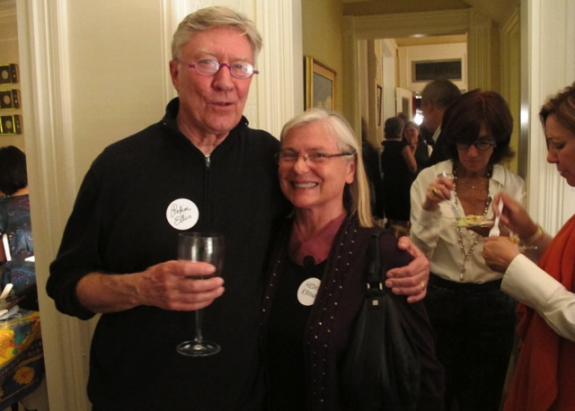
Robin Ellis with Hedvika Krone. Photo by Meredith Wheeler
Robin Ellis and Michele Reilly Hall. Photo by Helen Belletti
Robin & Meredith surprised me with a lunch invitation at D.C.’s iconic “Kramerbooks & Afterwards” the day after… I feel truly blessed!
The Whole Story: Grains of Truth
- At February 17, 2012
- By Katherine
- In Articles, News
 1
1
In the world of nutrition there seems to be no shortage of complexity and confusion. But I’ve found that simple and straightforward solutions are often strikingly successful. In no area is this more true than the remarkable power of whole grains. Over the years, countless clients have struggled with various gastrointestinal complaints such as constipation, bloating, or irritable bowel syndrome. Many have come to me after trying costly medications, usually with little relief.
In most cases, symptoms disappeared once they began increasing their fiber intake by eating adequate amounts of whole-grain foods. Some of my clients even teasingly call these foods their wonder drug. But while it’s true that whole grains are valuable for their fiber content, their benefits are much more vast. Whole grains play a profound role in health. A growing body of research shows whole grains- wheat, oats, rice, rye and corn, for example may help keep body weight down and prevent diabetes, heart disease and some cancers.
The importance of whole grains in health came to light in the 19th century when refining grains became popular-and its negative consequences were learned. In Asia, chickens were cured of symptoms of a human illness called beriberi, characterized by muscle wasting and nerve degeneration, when they were fed the discarded part of polished white rice. It was later found that the parts discarded during the refining process contain the essential nutrient, thiamin (a B vitamin) necessary to prevent beriberi.
In 1975, researchers Dennis Burkitt and Hugh Trowell published a book of scientific observations comparing the diet of Africans eating their native whole grains versus North Americans and British eating their diet of highly refined carbohydrates. The researchers described for the first time the role that whole, unrefined foods play in reducing the incidence of coronary heart disease, diabetes and cancer. Since then, numerous other research studies have chronicled the effects of whole grains on human health.
A whole grain has three parts: bran, germ and endosperm. The bran and germ contain fiber, Vitamin E, B vitamins (thiamin, niacin, riboflavin and pantothenic acid) minerals (calcium, magnesium, potassium, phosphorous, sodium, selenium and iron), protein, essential oils, antioxidants and phytochemicals (plant substances that may protect health). The endosperm contains mostly starch with a little protein and very few nutrients. When a grain is refined, turning whole wheat flour into white flour or brown rice into white rice, only the nutrient-poor endosperm is left. The riches found in the bran and germ are lost.
Food manufacturers and producers attempt to make up for the loss in nutrients by enriching refined grains (those found in breads, pasta, rice and cereals, for instance) with some essential nutrients, such as B vitamins and iron. But overwhelming scientific evidence has found major health differences in people who eat more whole grains compared to people who eat refined grains, proving enrichment doesn’t make up for the difference:
* Whole grains are our major source of fiber. The grain’s outer layer (the bran) keeps us regular and prevents constipation, hemorrhoids, diverticulitis and reduces risk for ulcerative colitis (Crohn’s disease).
* Whole-grain intake is strongly correlated with reduced cardiovascular disease. This is partly explained by the soluble fiber in grains (oats, rye and barley have the highest levels), which is associated with cholesterol lowering. But other substances in grains, such as antioxidants like Vitamin E, also play a role.
* People who eat more whole grains also have lower body weights, according to epidemiological research. This is attributed to the fiber, which promotes feelings of fullness in foods that are generally low in calories.
* Many studies have shown a strong link between whole-grain intake and reduced incidence of type II diabetes. This may be partly because the fiber in whole grains slows down stomach emptying, causing a lower rise in blood glucose and insulin. Also, whole grains contain nutrients such as Vitamin E and magnesium, which may help improve insulin sensitivity.
* Whole grains may also help prevent cancers, especially of the intestinal tract and maybe even breast cancer. Several theories have been put forth explaining the mechanisms. For one, the fiber speeds intestinal transit, which reduces exposure to potential carcinogens. Also, antioxidants enter the circulation through colon cells, providing long-term antioxidant protection through the entire digestive tract, according to Joanne Slavin, a professor in the department of food science and nutrition at the University of Minnesota in St. Paul. Ninety percent of a grain’s antioxidants aren’t released until they get to the colon, the last stage of digestion, where they may provide maximum protection against cancer.
Interestingly, grains are still a mystery to researchers. They are so complex and full of a multitude of different compounds, scientists are largely unsure of what components of the grain are responsible for the benefits.
“We’re not sure if the benefits are from the fiber or the phytochemicals,” says Simin Liu, assistant professor of medicine and epidemiology at Harvard. “In my opinion, it’s the thousands of phytochemicals in whole grains which produce most of the benefits.”
To prove his point, Liu points to a four-year National Cancer Institute-funded study of high-fiber cereals in which wheat bran was added in the processing as opposed to naturally occurring in a whole grain. Researchers were surprised to find the high-bran diet did not prevent colon polyps, often a precursor to cancer.
“The data doesn’t support the claim that added bran fiber or fiber supplements make a positive difference in colon cancer, which is why I like to use the term ‘whole grain foods’ instead of fiber. The data only point to whole foods,” says Liu.
But while whole grains provide this wide array of health benefits, most Americans don’t take advantage of them.
“American adults eat six to seven servings of refined grains but only one serving of whole grains a day, with children eating less than one serving-well below U.S. Dietary Guideline recommendations of at least three servings,” says Slavin.
While science continues its search for the answers, I recommend you switch from refined grain products to whole-grain products. Instead of white bread or crackers, choose whole wheat, whole rye or whole grain breads and crackers. Instead of white pasta or white rice, choose whole wheat pasta or brown rice or cereals made with whole oats or whole corn. Try unusual grains such as bulgur (crushed whole wheat), whole wheat couscous or exotic grain-like substitutes such as quinoa and amaranth.
But looking for whole-grain foods in your supermarket can be challenging. Many “whole wheat” or “multi-grain” breads, for instance, are made predominantly of white flour, even though the label may say “wheat flour.” Be sure the first ingredient on the nutrition label of your pasta, cereal, crackers or bread is a “whole” grain such as whole wheat, whole oats or whole rye. Also look for a whole-grain product containing 3 or 4 grams of fiber per 1 ounce (28 grams) or per 80- to 100-calorie serving. That signifies that the grain is likely in its most natural state.
Grains contain about 80 – 100 calories, 15 grams carbohydrate, 3 grams protein and 1 gram fat per 1 ounce or 28 gram serving, which plumps to about1/2 cup if cooked.
The grain family includes barley, corn, millet, oats, rice, rye and wheat. Amaranth, buckwheat and quinoa belong to a different botanical family. But they all contain protein, B vitamins, minerals and fiber, as well as antioxidants such as lignans and phenolic acids.
Though grains such as corn, oats, rice, rye and wheat are relatively easy to find and cook, other of these healthful ingredients may require a search and some guidance before cooking.
Amaranth. This tiny seed, often found in health food stores, can be used to make flour or pasta. Or buy the seeds and add them to your bowl of cereal, rice or stir fries.
Barley. This versatile grain makes a great pilaf or risotto; use the cooked leftovers in salads, stir fries or tuna salad.
Buckwheat. The seeds of the plant are used to make buckwheat flour, the basis of blini. Buckwheat groats are the hulled and crushed kernels of the seed and are usually cooked in a manner similar to rice. When the groats are toasted, they are called kasha. Add buckwheat to soups, stew, meatloafs or hamburgers. Cook buckwheat grits for a hot breakfast cereal.
Bulgur (also spelled bulghur). Made from whole-wheat berries that are steamed, partially de-branned, dried and crushed or cracked, bulgur is available in coarse, medium and fine grinds. A staple of the Middle Eastern diet, it is seen on the lunch or dinner table, in salads such as tabbouleh or stews. It can also be cooked like a rice pilaf.
Millet. Cracked millet can be cooked like couscous; another variation, pearl millet, can be cooked like rice or a hot breakfast cereal. Millet flour is used in roti, and Indian flatbread.
Quinoa. Pronounced Keen-wah, this grainlike product, is often found in health food stores. The toasted grains have a delicious roasted flavor and can be added to vegetable dishes or rice. Quinoa flakes make a hearty breakfast.
Do You Need Gluten-Free?
- At February 16, 2012
- By Katherine
- In Articles, News
 5
5
A jug of wine, NO loaf of bread, and thou?
See me explain how a gluten-free diet may do more harm than good on ABC-7
This article appeared in The Huffington Post
Hear me – and three other experts – discuss “The Gluten-Free Craze” on National Public Radio’s The Diane Rehm Show.
It’s all the rage right now; in fact, you may be thinking of going on a gluten-free diet. Before you do, here are some things to think about: First, you are likely to miss out on critical nutrients and health benefits only gained with gluten-containing whole grains.
Second, a gluten-free diet is a therapeutic diet for those with debilitating celiac disease, a serious auto-immune disorder which virtually destroys the intestinal tract. But celiac only affects about 1% of the population.
Third, the danger of self-diagnosing and taking gluten out of your diet prematurely is that you will would never be able to get an accurate diagnosis of your symptoms. An intestinal biopsy is the only way to detect celiac definitively.
People try a gluten-free diet because they are overweight, feel tired, bloated, and/or depressed, and find reducing gluten correlates with feeling better or losing weight. But that is more likely because they’ve cut out excess calories found in many flour-based snack foods and they mistakenly attribute feeling better to taking out the gluten. So, before you rush into a gluten-free diet, why not try something simple, say, an apple… or exercise? Or would you prefer a life of no bread, pasta or birthday cakes? It’s a tough row to hoe, and I’m here if you need me, as studies have found gluten-free diets can be seriously nutrient-deficient, low in fiber, iron, folate, niacin, thiamine, riboflavin, calcium, B12, phosphorus, and zinc. That’s because so many “gluten-free” products are made with refined, unenriched grains and starches, which contain plenty of calories, but very few vitamins and minerals.
The new gluten-free industry is making millions from Americans’ desperation to feel better. There has been an explosion of gluten-free junk foods, and I hope you don’t become a victim.
But I have great news… many clients have thought they might need a gluten-free diet, but when we worked together at improving their nutrition and life balance, symptoms vanished! Perhaps that could be you?
If you take the following steps and find you do need a gluten-free diet, it can fill all your nutritional requirements, but only if done CAREFULLY…
Do You Need A Gluten-Free Diet? A Step-by-Step Guide
1. Have a complete check-up with your family physician,
2. Consult with appropriate specialists, such as an allergist for wheat allergy and a gastroenterologist for celiac or another GI disease,
A. If you have a wheat allergy, you must avoid wheat, but you do not have to avoid gluten from other grains,
B. If you have celiac disease, you must avoid gluten – even the tiniest amounts (you must be eating gluten for the diagnosis to be made),
3. If you do not have a wheat allergy or celiac, visit a registered dietitian to verify that you are eating a balanced diet with plenty of nutrient-dense, naturally fiber-rich foods and adequate physical activity. A healthy diet and lifestyle reduces negative gastrointestinal symptoms, inflammation, boosts the immune system, improves brain function, reduces depression, and anxiety. If you are overweight, lose weight, as body fat can be toxic and produces hormones and pro-inflammatory chemicals which regulate metabolism, the immune system, inflammation, and the progression of artery hardening, so that when you have less body fat, you get many biological benefits, and feel better,
4. If symptoms persist, though in most cases they do not, you may be one of the rare people who are “gluten sensitive,” though hopefully not, as it’s a tough life. To confirm the diagnosis, and if a gluten-free diet is absolutely necessary for you – even though a gastroenterologist has verified you do not have celiac disease – visit your gastroenterologist, or the University of Maryland’s “Center for Celiac Research,” where they specialize in, among other things, detecting “gluten sensitivity,” which may be a newly identified disorder.
What is Gluten?
Gluten is a protein in wheat and some other grains, such as rye and barley. A gluten experiment in Food Science at the University of Maryland left a lasting impression on me about the function and importance of gluten. I kneaded bread dough under flowing water. As I kneaded the dough, the starch slowly washed away. What remained was a rubbery mass – the gluten – the protein in wheat which gives bread its structure.
Gluten-Containing Foods
Barley, Bulgur, Cereal Binding, Couscous, Durum, Einkorn, Emmer, Filler, Farro, Graham Flour, Kamut, Malt, Malt Extract, Malt Flavoring, Malt Syrup, Oats which are not labeled “Gluten-Free” because they have been contaminated by gluten in the field or in the processing plant, Rye, Semolina, Spelt, Triticale, Wheat, Wheat Bran, Wheat Germ, Wheat Starch, and others…
Naturally Gluten-Free Whole Grains
Brown Rice, Whole Corn, Gluten-Free Oats, Millet, Teff, Sorghum, Wild Rice, Buckwheat, Amaranth, and Quinoa.
Wheat Allergy
WA is an adverse immunologic reaction to wheat proteins, a classic food allergy affecting the skin, gastrointestinal tract or respiratory tract.*
Celiac Disease
CD is an immune-mediated enteropathy (intestinal disease) triggered by the ingestion of gluten in susceptible individuals. The onset of symptoms is usually gradual and characterized by a time lag of months or years after gluten introduction.*
Gluten Sensitivity
When both allergic (WA) and autoimmune mechanisms (CD) have been ruled out (diagnosis by exclusion criteria), individuals who experience distress when ingesting gluten may be considered as having GS.*
*“Spectrum of gluten-related disorders: consensus on new nomenclature and classification,” BMC Medicine 2012, 10:13 doi:10.1186/1741-7015-10-13; Sapone, Bai, Ciacci, Dolinsek, Green, Hadjivassiliou, Kaukinen, Rostami, Sander, Schumann, Ullrich, Villalta, Volta, Catassi, Fasano.
It is critical that you are examined by a gastroenterologist before switching to a Gluten-Free diet.
Why? Once you eliminate gluten, it is virtually impossible to diagnose celiac, and the diagnosis of celiac, an extremely serious auto-immune disorder, should be your primary concern.
My Favorite Gluten-Free Guides
“Gluten-Free Diet: A Comprehensive Resource Guide” by Shelley Case, R.D.*
“Easy Gluten-Free” by Tricia Thompson, M.S., R.D. and Marlisa Brown, M.S., R.D.*
“Gluten-Free, Hassle Free” by Marlisa Brown, R.D., C.D.E.*
*Anyone giving gluten-free dietary advice should be a registered dietitian, and have the “R.D.” after their name.
Don’t forget, Diet Simple is filled with recipes, including some marked “Gluten-Free!”
Hear me – and three other experts – discuss
“The Gluten-Free Craze” on National Public Radio’s The Diane Rehm Show.
See me explain how a gluten-free diet may do more harm than good on ABC-7


